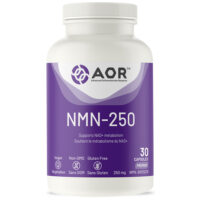Stroke is the third most common cause of death in the United States. It is also one of the top causes of disability. Yet far fewer people can recognize the signs of a stroke than the signs of a heart attack.
What Is a Stroke?
A stroke is the interruption of blood flow to the brain. It cuts off oxygen and nutrients that the brain needs to function, causing brain cells to die. There are two common types of stroke:
* Ischemic stroke – This is the most common type of stroke. It is caused by a blood clot in a vessel or artery in the brain.
* Hemorrhagic stroke – This type accounts for about 20% of strokes. It is caused by a broken blood vessel in the brain.
A stroke can leave its victim paralyzed, and it can cause mental and emotional problems. It can also impair speech and cause pain after the immediate danger is over. And if medical treatment is not obtained quickly, it can result in death.
Warning Signs
Knowing the warning signs of a stroke could save your life, or the life of someone close to you. If you have these symptoms, or you are around someone else who does, immediate medical attention is imperative:
* Sudden numbness or weakness in the face, arms or legs – This typically occurs on only one side of the body, but it could be on both sides
* Confusion or trouble speaking or understanding others
* Suddenly impaired vision, in one or both eyes
* Dizziness, loss of balance or coordination, or trouble walking
* A sudden, severe, and inexplicable headache
All of these symptoms usually occur suddenly. They may also be accompanied in some cases by nausea or vomiting, stiff neck, seizure or unconsciousness. Symptoms also tend to get progressively worse, but in some cases they might seem to go away.
Every Minute Counts
When a person is having a stroke, time is of the essence. Getting medical attention as quickly as possible can greatly reduce their risk of death or disability. They should see a doctor within 1 hour in order to be evaluated and get treatment started.
Ischemic stroke patients can receive clot-dissolving drugs, but they must be administered within 3 hours of the onset of the stroke. Hemorrhagic strokes are more complicated to treat, but getting the patient to the hospital quickly can greatly increase his chances of survival and reduce the incidence of disability.
Risk Factors
Some people are more likely to have a stroke than others. Some of the risk factors include:
* High blood pressure
* Heart problems
* Tobacco use
* Diabetes
* High cholesterol
Quitting smoking and keeping health problems under control can greatly reduce the likelihood of stroke. But it is still important to know the warning signs. Getting medical attention right away is crucial to a stroke patient’s health.







